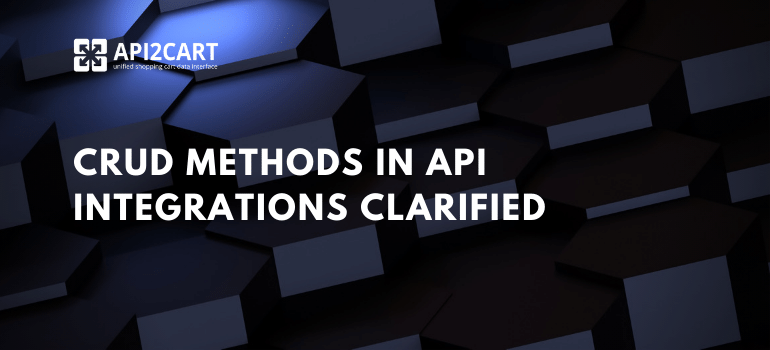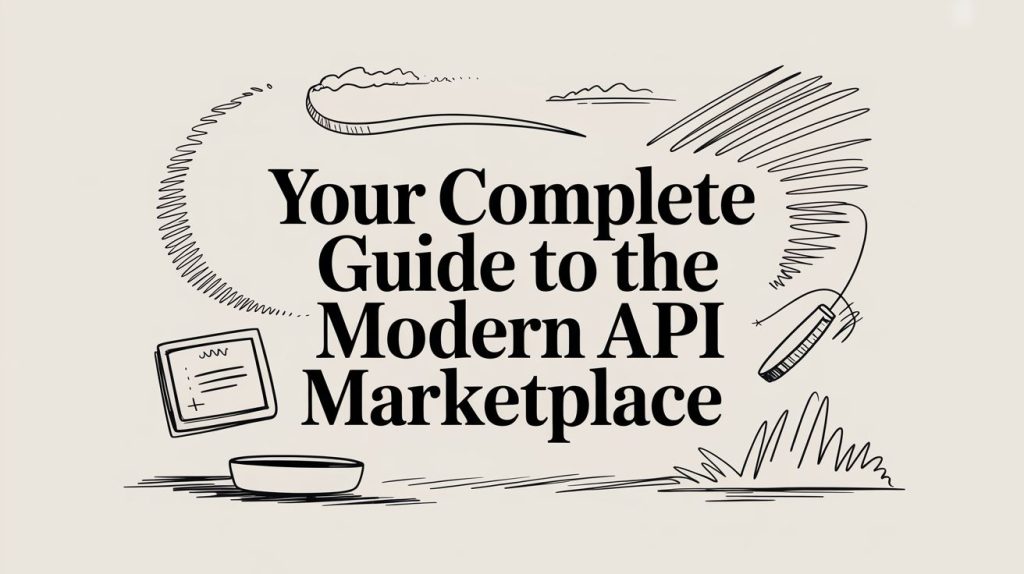
The product, customer, order and other data from web stores powers the functions of various B2B e-commerce software products. Shopping cart API integration is what enables such software to retrieve and manipulate these data. Typically, API allows performing CRUD operations, which are the following: create, read, update and delete. It is a bare minimum of options in most applications on the Internet. CRUD operations comprise fundamental methods used for data access and management via RESTful APIs.
Understanding CRUD is essential for building efficient, reliable, and scalable integrations, whether you’re connecting to eCommerce platforms, managing databases, or synchronizing systems. However, these matches are not absolute and there are three methods that can be interchangeable in some cases and thus might cause confusion. These are POST, PUT, and PATCH.
In this article, we’ll break down each CRUD operation, explain how they work in the context of API calls, and explore best practices for using them effectively in your integrations.
Understanding CRUD Methods in API
CRUD stands for Create, Read, Update, and Delete — the four basic operations used to manage data in most software applications. In the context of APIs, CRUD methods define how a client application can interact with a server to perform these operations on resources, such as products, orders, or customers.
Each CRUD action typically maps to specific HTTP methods:
- Create – usually handled with a POST request, used to add a new resource;
- Read – performed with a GET request, used to retrieve data without modifying it;
- Update – often done with PUT or PATCH requests, used to modify existing data;
- Delete – executed with a DELETE request, used to remove a resource.
By using CRUD methods, APIs provide a standardized way to interact with data, making integrations more predictable, maintainable, and scalable. This is especially important in eCommerce API integrations, where different systems need to exchange and manage data across multiple platforms consistently.
Who Needs CRUD Operations via Shopping Cart API?
CRUD operations are crucial for various types of eCommerce-related software, including:
- Shipping software – to create, update, and track shipments from connected stores;
- Warehouse Management Systems (WMS) – to manage inventory levels, product information, and order statuses;
- Enterprise Resource Planning (ERP) systems - to synchronize products, orders, and customer data across business processes;
- Product Information Management (PIM) systems - to ensure accurate and consistent product details across multiple channels;
- Order Management Systems (OMS) - to process order creation, updates, and fulfillment tracking;
- Inventory management solutions - to adjust stock quantities and prevent overselling.
Thus, CRUD operations via a shopping cart API are essential for a wide range of eCommerce software solutions, from shipping and warehouse management systems to ERP, OMS, and marketing automation tools. By enabling the ability to create, read, update, and delete store data in real time, these operations allow software providers to streamline workflows, ensure data accuracy, and deliver better services to online merchants. CRUD capabilities form the backbone of efficient and scalable eCommerce integrations.
Creating a Resource: POST vs PUT
Both verbs can be used for creating a resource. So what is the difference between them?
The POST option is typically used to create side resources. In that case, when you create a new resource, you POST it to the so-called “parent” resource. The server associates the new resource with “parent” resource and creates a URI for it itself.
If you want to create a resource via PUT, you need to provide a URI for it. PUT is more often used for updating. If you use PUT to the URI that represents the existing resource, it will just update it, if the URI you provided doesn’t exist, the server will create it.
Updating a Resource in CRUD operations: PUT vs PATCH
You can update the resource using either PUT or PATCH, both of which are part of CRUD operations. So which one is better to use? The PUT method updates a resource by simply replacing it with a new version, while the body of the PATCH request contains instructions on how to modify a part of a resource. Also, PUT is idempotent (see next paragraph for the explanation), while PATCH is not. The latter has not yet gained wide adoption, even though PATCH is considered to be a RESTful method. Many popular web application frameworks don't support the PATCH method yet, and Ruby on Rails included PATCH only recently.

Idempotence and Safety: Why Do They Matter?
Most HTTP method, used in CRUD operations, have the property of “idempotence” and “safety”. Idempotent methods can be performed many times without different outcomes. Safe methods are those that do not modify resources. Let’s take PUT and POST as the example. The same PUT request with the same data can be sent multiple times and the result will be the same. It means that this method is idempotent. Multiple POST requests with the same data will create multiple new resources because POST is non-idempotent. CRUD includes only one safe method, GET.
As to the PATCH method, it is neither safe nor idempotent. However, it can be idempotent, depending on how the required modifications are communicated.
Defining the right verbs is an important part of designing a RESTful API or building a web application, that is why one need to take into account all methods’ specifics. Understanding them helps to design an API or an APP, for example, in shopping cart API integration, so that users will have an excellent experience with them.
Unified eCommerce Integration REST API
In case you are a B2B eCommerce vendor planning on developing integration with shopping platforms, consider integration via API2Cart REST API. It offers a unified API that lets you integrate with 60+ eCommerce platforms and marketplaces at once.
API2Cart provides 100+ API methods that allow to work with the following entities:
- products: product.list / product.count / product.info / product.find / product.add / product.update / product.delete;
- orders: order.list / order.add / order.update;
- shipments: order.shipment.list / order.shipment.add / order.shipment.update / order.tracking.add;
- customers: customer.list / customer.count / customer.add / customer.find.
All of these and other methods provided by API2Cart are HTTP methods performing GET, POST, PUT, DELETE CRUD operations.
Why API2Cart?
- Scalable and flexible service. By using API2Cart you will be able to integrate your B2B soft with an unlimited number of client's stores.
- Full tech support. Highly qualified support technicians are ready to answer all your questions in order to satisfy your special needs and requirements.
- Reliable data interaction. SSL certificate is used to ensure the security of integration together with 32-symbol API key to access the system.
- Well-documented API. Static and interactive documentation makes integration with eCommerce platforms via API2Cart an easy process.
- Single point of entry. Save your time and resources on developing a number of integration methods to access different shopping platforms as API2Cart offers one API to perform data interaction in no time. It has already investigated popular APIs of 60+ eCommerce platforms and has developed the integration with all of them.
We also maintain all the connections, so you will not need to worry about further upgrades when new versions of eCommerce platforms come out.
In case you have some questions considering API2Cart, schedule a quick call with our representative or try out how API2Cart will work for your business. Just a reminder - we provide a 14-day FREE trial for you to see how API2Cart will work for your business 🙂



